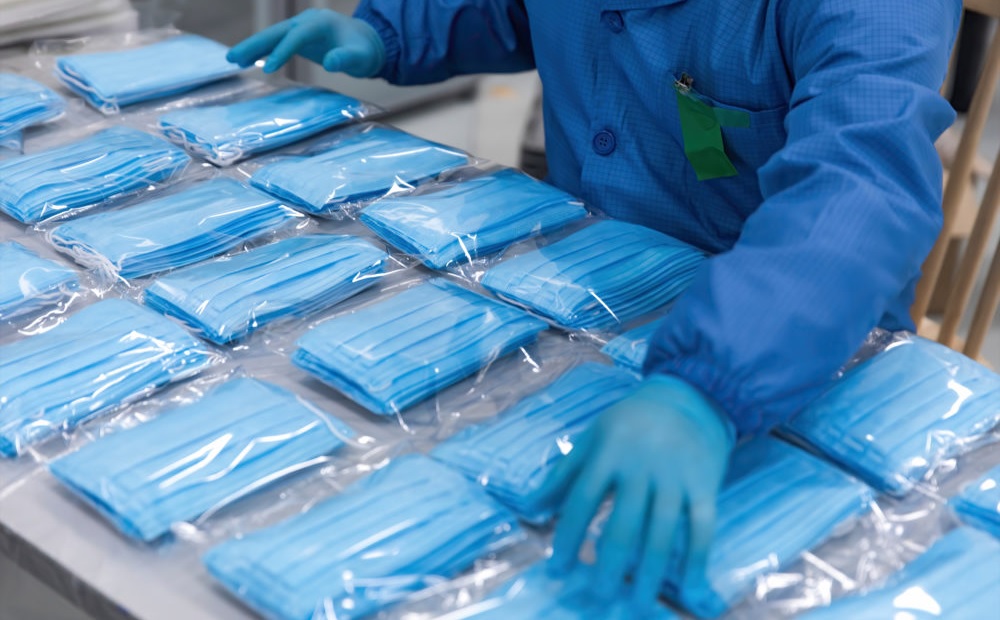Among the challenges COVID-19 imposes for the nation’s 1,772 juvenile facilities according to those working inside and monitoring them from the outside, are these:
- Necessary social distancing disrupts efforts to ensure that young incarcerees don’t linger in potentially psychologically damaging isolation;
- Absences of employees with coronavirus are resulting in suspensions of needed educational programs.
- Uneven, gradual federal approvals for youth vaccines have tripped up organizations hoping to inoculate all the young people in their facilities.
- Young COVID-19 patients can develop a multi-system inflammatory syndrome that sometimes causes life-threatening problems.
- Some of the most poorly maintained youth facilities confine young people to cramped, unsanitary quarters that feed the spread of coronavirus.
So far, juvenile facilities — 789 of the 1,510 nationwide are detention centers or long-term secure facilities, the remainder are group homes, residential treatment centers, wilderness camps and such — and the organizations have reported no young people dying from the disease. Precautions aimed at avoiding those deaths and limiting COVID-19’s spread include releasing young people from facilities, videoconferencing court appearances and suspending in-person visits.
Still, experts who study the numbers and protocols suggest that a pandemic disaster could strike in a heartbeat.
“With the new variant, it’s become a part of our daily lives, unfortunately, and it’s a scarier reality than it was a couple of months ago,” said Maureen Washburn, senior policy manager with the San Francisco-based nonprofit Center on Juvenile and Criminal Justice. “The people who are more at risk now are those who are incarcerated.”
Pandemic’s toll on juveniles, juvenile facilities isn’t precisely calculated
Assessing the impact of COVID-19 on juvenile correctional facilities can be difficult. That’s largely because data-sharing is voluntary, and some facilities do not report any numbers. Additionally, facilities are managed by a mix of federal, state or local entities, without one, unifying set of operating standards.

Maureen Washburn, senior policy manager at the Center on Juvenile and Criminal Justice.
Nevertheless, the Washington, D.C.-based Sentencing Project has estimated that just under 4,000 young people out of about 60,000 in the system had tested positive for coronavirus in juvenile facilities as of March 31, 2021. Josh Rovner, senior advocacy associate at the project and the curator of the national data, recommended in September 2020 that the U.S. Department of Justice collect COVID-19 data from juvenile facilities around the country. The Trump administration didn’t do that, nor has Biden’s.
The push, early in the pandemic, to transfer youth to community-based programs has slowed and, in some locales, even reversed, the Baltimore-based Annie E. Casey Foundation has reported. The count of juveniles in detention nationwide reached a 19-month high last fall, even though that number was 22% lower than it had been in March 2020, according to Casey survey results released in December 2021.
“The likelihood of detention in a place is really the local legal culture, the local legal climate, statutory guidelines and the availability of support and services,” said Tom Woods, a Casey senior associate.
The situation in California, for example, reflects that. A state plan to remove young people from California’s four juvenile facilities through the pandemic is proceeding, with an eye toward shuttering them permanently in 2023. Nevertheless, the Center on Juvenile and Criminal Justice’s Washburn is among those questioning the pace of things.
“The numbers are dwindling but it’s not happening fast enough to reduce the density and the speed at which COVID is spreading,” she said.
The count of incarcerated California youth testing positive for COVID-19 climbed from zero in June 2021 to about 200 on Sept. 1 last year to 463 on Jan. 11, according to the state’s Division of Juvenile Justice.
California is among states that don’t monitor juvenile and adult prisons equally
Last month, that San Francisco juvenile justice center, in a letter to California Gov. Gavin Newsom, asked for a widening of the criteria for releasing incarcerated youth; more detailed and frequent COVID-19 data; stricter PPE and mask requirements; vaccination education for youth and staff; and stricter staff vaccination and testing requirements. The center was among 60 organizations that signed the letter.
“State leaders must respond quickly to ensure that youth are kept safe – both from the virus and the devastating effects of isolation,” the letter read. “We urge swift action that prioritizes transparency, common-sense public health measures, and population reduction.”
As of this JJIE report, the governor’s office had responded to the letter and was conferring with Washburn’s organization. Part of the problem, Washburn said, is that the state Department of Corrections and Rehabilitation does not inspect and oversee juvenile facilities with the same rigor and regularity as it monitors adult prisons.
“There’s no kind of oversight that steps in and does what needs to be done to keep young people safe,” Washburn said, noting violence, corrections officers unwarranted use of force and other issues that create a toxic environment.
Other states have faced criticism too. In South Carolina, state elected officials blasted the juvenile justice system last summer for causing young incarcerees who were kept in isolation to miss an exam necessary for them to earn their high school diplomas.
By last August, one-fourth of young incarcerees had been vaccinated in Louisiana, where some youth were kept in their cells 23 hours per day to try and curb COVID-19 infections.
“There is no way for youth to become rehabilitated or accomplish any requirements that are set out for them by the justice system if the opportunities are not even being provided in the first place,” wrote the Juvenile In Justice blog,
Some states, acting faster, were better at curbing COVID-19 among juveniles
“It’s kind of interesting that there is a relationship between the places successful at getting their population down during 2020 fared better at peak levels” of the pandemic and had fewer positive coronavirus test results than facilities whose population mainly remained unchanged, said Woods, of the Casey Foundation.
As it lowered the population of kids being incarcerated short- and long-term and raised the number in community-based correctional programs, the Colorado’s Division of Youth Services went from 116 active coronavirus cases among juvenile incarcerated people in November 2020 to zero active cases in late December 2021, according to the UCLA Law COVID Behind Bars Data Project.
Since reporting two cases among youth in early January, Colorado’s COVID-19 dashboard, launched in July 2020, showed 68 active coronavirus cases among juveniles in its system and 79 active cases among staff members as of Jan. 11. The agency had been expecting such a surge amid the omicron wave of infections.

Anders Jacobson is the director of Colorado’s youth services division.
The agency has sought to corral coronavirus within its walls with daily conference calls among people overseeing the state’s 12 juvenile facilities; transparency via a real-time, open-to-the-public data dashboard that requires all browsers to refresh its page; immediately sharing via Google Chat when someone tests positive; and using surveillance video to monitor distancing and mask wearing, said Anders Jacobson, director of Colorado’s youth services division.
“The battle,” Jacobson said, “is still on in terms of being vigilant and having all our protocols in place and I think that’s going to ultimately help us not see significant spikes. What we’ve really learned is that daily communication needs to take place with some sort of standing routine to know exactly what’s going on in each of your centers.”
He credited the staff members on the ground with making that happen. “We can set the protocols and what we expect but they’re the ones showing up day in and day out,” he said.
On the East Coast, early on in the pandemic, Derrell Frazier, a Baltimore-based, Casey Foundation youth advisor, said during webinar last fall, that his contacts at Maryland’s Department of Juvenile Services correctional facilities were describing dire situations. Young people were having to make their own masks and figuring out ways to sanitize their surroundings.

Derrell Frazier is a youth advisor at the Casey Foundation.
“Right now, there is no rehabilitation that is happening for young people,” Frazier, of the foundation’s juvenile strategy group, said during the webinar.
But today, Maryland’s multi-pronged attack is similar to Colorado’s. The state maintains a frequently updated webpage giving COVID-19 testing and infection numbers dating back to April 2020. It has suspended in-person visits, monitors young people entering detention for 14 days and has reduced the number of young people living in dorm-style units.
“What I can tell you is that we are still using the same mitigation strategies as we did when the pandemic first started and they have been very successful,” said Eric Solomon, director of communications for the Maryland agency.
On Jan. 12, the system had 19 young people and 183 staff members who tested positive for COVID-19.
In New York State, where the country’s first juvenile prison opened in 1825 in what is now downtown Manhattan, the Office of Children and Family Services is following some of the same precautionary measures as other states. At the same time, it continues a youth decarceration notably marked by the permanent closure in 2010 of the once-notorious Tryon State School for Boys in upstate Fulton County, where a young Mike Tyson learned to box.

Eric Solomon is the director of communications at the Maryland Department of Juvenile Services.
Among the pandemic policies: Facilities now transition to virtual visits for 14 days after any positive COVID-19 test, and facility employees must get fully vaccinated or agree to weekly testing, according to agency officials.
The agency also regularly releases coronavirus data. The most recent figures show that COVID-19 positive test results among young people in that system rose from 16 out of 282 in residential centers last December to 50 out of 286 on Jan. 6. During the same period, among staffers, positive results rose from 65 out of 1,081 to 98 of 1,083. Two staff members have died since the beginning of the pandemic. In December, 63% — or 707 of 1,118 facility employees at nine facilities — were vaccinated.
Going forward, advocates for juvenile offenders say, facilities must keep up the pressure to decarcerate, observe measures known to block the spread of coronavirus, collect and share data and promote flexibility in terms of the way young people move through the system.
“A lot of things about the pandemic make juvenile detention harder,” said the Casey Foundation’s Woods, who said jurisdictions successful at keeping COVID-19 at bay have supported practices such as telephone check-ins with probation officers or support to parents so they can better welcome young incarcerees back home.
“It’s important to remember how discretionary the decision making around this really is,” he said. “Decision makers pretty much have more options and more latitude than an outside observer would think they do – so it really is an addressable problem.”
He added, “The ones that have been successful have been resourceful,” he said.






























